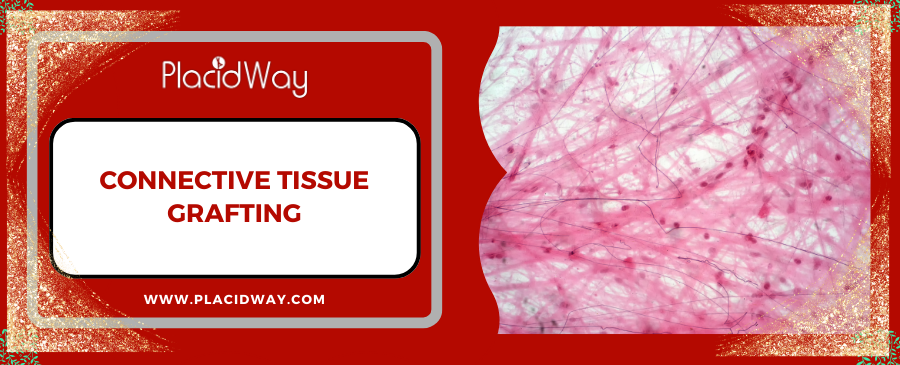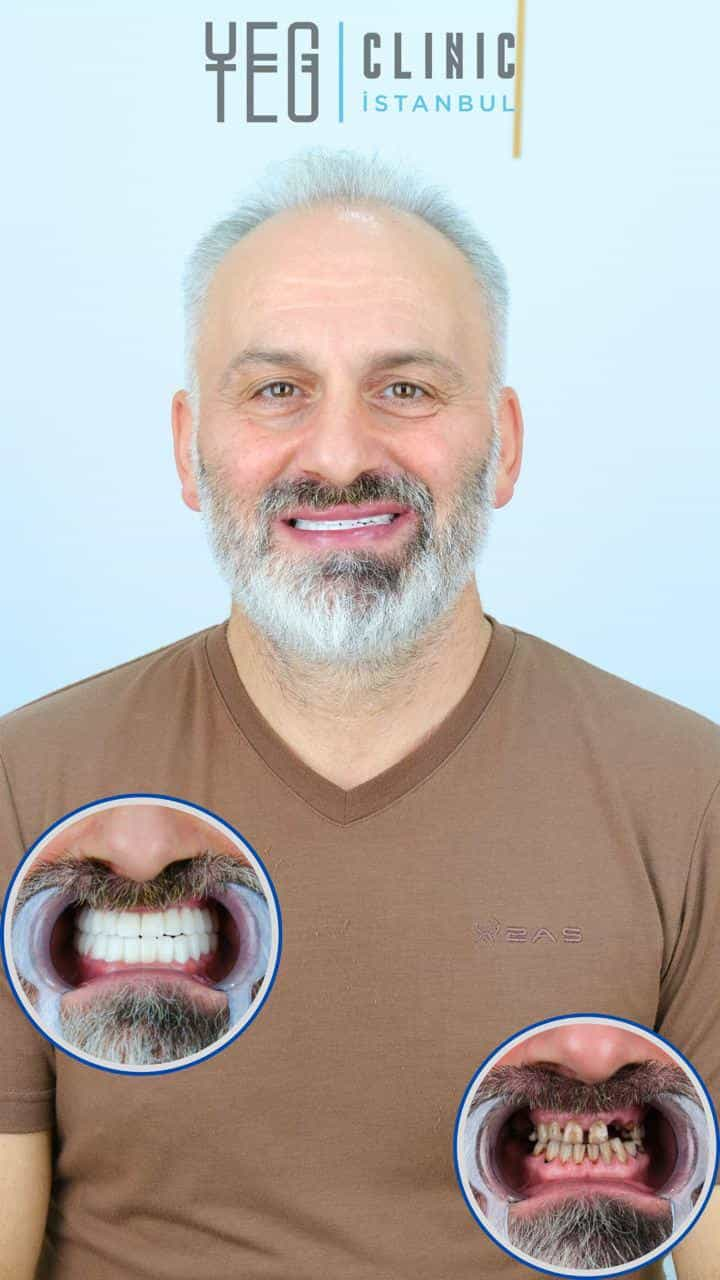
Reclaim Your Smile: Understanding Connective Tissue Grafting for Gum Health
Has your smile started to look "long"? Do your teeth feel sensitive when you sip a cold drink or brush too hard? You might be experiencing gum recession, a common dental issue where the gum tissue around your teeth pulls back, exposing more of the tooth, or even the tooth root. This isn't just an aesthetic concern; it can lead to serious oral health problems if left untreated.
Fortunately, there’s an effective solution: Connective Tissue Grafting. This sophisticated dental procedure is designed to restore lost gum tissue, protect your teeth from damage, reduce sensitivity, and give you back a healthy, confident smile. For many patients worldwide, exploring this treatment abroad offers a unique opportunity to access high-quality care at a more affordable price, often combined with the chance to experience a new culture.
Whether you're struggling with discomfort, worrying about the appearance of your receding gums, or simply seeking comprehensive information on "how to fix receding gums," this guide will walk you through everything you need to know about connective tissue grafting. We’ll cover the signs that indicate you might need this treatment, what causes it, the procedure itself, recovery, costs, and why dental tourism might be the perfect path for your gum health journey.
What symptoms indicate I might need connective tissue grafting?
Recognizing the early signs of gum recession is crucial for timely intervention. Many people notice changes gradually, often attributing them to aging or hard brushing. However, certain symptoms should prompt a conversation with a dental professional:
- Increased Tooth Sensitivity: One of the most common complaints. When gum tissue recedes, the softer dentin of the tooth root becomes exposed. This dentin contains tiny tubules leading to the tooth's nerve, making it highly sensitive to hot, cold, sweet, or acidic foods and drinks.
- "Longer" Looking Teeth: Your teeth may appear longer than they used to because more of the tooth surface, including the root, is visible. This aesthetic change is often what first catches a patient's eye.
- Exposed Tooth Roots: You might literally see the yellowish or darker root surface where healthy pink gum tissue should be. This exposure not only looks unappealing but also makes the tooth more vulnerable to decay.
- Bleeding Gums: While not always directly from recession, inflammation and gum disease that often accompany recession can lead to bleeding during brushing or flossing.
- Pain or Discomfort: Some individuals experience localized pain or general discomfort along the gum line, especially when brushing.
- Change in Tooth Color at the Gum Line: The root surface can have a different color or texture than the enamel, leading to a noticeable difference where the gum used to be.
- Notches (Abrasion) at the Gum Line: Aggressive brushing can sometimes cause physical notches or indentations at the base of the tooth where the enamel meets the root.
Why do gums recede, and what causes exposed tooth roots?
Gum recession is not just a random occurrence; it's usually a symptom of underlying issues. Understanding the causes is key to prevention and effective treatment:
- Periodontal (Gum) Disease: This is the most common cause. Bacterial plaque buildup leads to inflammation and infection of the gums and supporting bone. As the disease progresses, the gum tissue and bone are destroyed, causing the gums to pull away from the teeth. Many patients search for "gum disease treatment" and then realize they need grafting.
- Aggressive Tooth Brushing: Brushing too hard or using a toothbrush with hard bristles can physically wear away gum tissue and tooth enamel over time. It's like scrubbing a wall too hard – eventually, you'll wear through the paint.
- Insufficient Oral Hygiene: A lack of consistent brushing and flossing allows plaque to harden into calculus (tartar), which irritates the gums and leads to recession.
- Genetics: Some people are simply predisposed to thin gum tissue or gum recession, regardless of how well they care for their teeth. If your parents or grandparents had receding gums, you might be more susceptible.
- Tobacco Products: Smoking and other tobacco products increase your risk of gum disease and can impede the healing process of gum tissue.
- Teeth Grinding (Bruxism) and Clenching: These habits put excessive force on the teeth, which can damage gum tissue and bone.
- Misaligned Teeth or Malocclusion: When teeth don't come together properly, certain teeth may bear more biting force, leading to gum recession in those areas.
- Piercings: Lip or tongue piercings can rub against the gum tissue, irritating it and causing it to recede.
- Hormonal Changes: Fluctuations in female hormones during puberty, pregnancy, or menopause can make gums more sensitive and vulnerable to recession.
What are the different types of gum grafting procedures and who is a candidate?
While "connective tissue grafting" is the focus, it's helpful to understand the variations, as your dental specialist will recommend the best approach for your specific situation. The goal of all these procedures is to cover exposed roots or thicken existing gum tissue.
Types of Gum Grafting Procedures:
- Connective Tissue Graft (CTG): This is the most common and effective method for root coverage. A small flap of skin is cut on the roof of your mouth (palate), and tissue from underneath the flap (subepithelial connective tissue) is removed. This tissue is then stitched to the area of gum recession, and the flap on the palate is closed. It's preferred because it offers excellent aesthetic results and a natural blend with existing gum tissue.
- Free Gingival Graft (FGG): Similar to CTG, but a small piece of tissue is taken directly from the surface of the palate, rather than from under a flap. This tissue is then attached to the recession site. FGG is often used when a larger area needs to be treated or when a thicker band of gum tissue is required.
- Pedicle Graft (Lateral Sliding Flap): In this procedure, instead of taking tissue from the palate, a flap of gum tissue is created adjacent to the receded area and partially cut, leaving one edge attached. This flap is then pulled over to cover the exposed root and stitched into place. This method is only possible if there is enough healthy gum tissue next to the receding gum.
- Allograft (Donor Tissue): For patients who prefer not to use tissue from their own palate, or when multiple sites need grafting, sterilized donor human tissue (Alloderm® is a common brand) can be used. This eliminates the need for a second surgical site in the patient’s mouth.
- Pinhole Surgical Technique (PST™): A less invasive alternative in some cases, where a small pinhole is made in the gum, and specialized instruments are used to loosen the gum tissue and slide it over the exposed root. Collagen strips are then inserted to hold the gum in place. Not all patients are candidates for PST.
Who is a Good Candidate for Gum Grafting?
Generally, you might be a candidate for gum grafting if you:
- Have noticeable gum recession affecting one or more teeth.
- Experience tooth sensitivity due to exposed roots.
- Are concerned about the aesthetic appearance of your "long" teeth.
- Have good overall health and no uncontrolled systemic diseases.
- Have healthy teeth and supporting bone, or have existing periodontal disease under control.
- Are a non-smoker or willing to quit, as smoking can impair healing.
- Are committed to excellent oral hygiene before and after the procedure.
Your periodontist or oral surgeon will conduct a thorough examination to determine the best grafting technique for your specific needs.
What can I expect during and after recovery from a connective tissue graft?
Understanding the procedure and recovery timeline can help alleviate anxiety and set realistic expectations for your "gum graft recovery."
During the Procedure:
Connective tissue grafting is typically performed under local anesthesia, meaning the area will be completely numb, but you'll be awake. Some clinics may offer sedation (oral or IV) for anxious patients. The procedure usually takes 60 to 90 minutes per site, though it can vary based on the number of areas being treated. You might feel some pressure, but no pain.
Immediately After the Procedure:
- Bleeding: Minimal bleeding is normal. Your dentist will provide gauze to manage it.
- Pain/Discomfort: As the anesthesia wears off, you'll likely feel some discomfort, especially at the donor site (palate). This is manageable with prescribed pain medication. Many describe the palate discomfort as similar to a pizza burn.
- Swelling: Some swelling in the treated areas is common, peaking around 24-48 hours. Applying ice packs intermittently can help.
- Diet: You'll be advised to stick to soft foods (soups, yogurt, mashed potatoes, smoothies) for the first few days to a week. Avoid anything hot, spicy, crunchy, or chewy that could disturb the graft or donor site.
Recovery Timeline and Expectations:
- First Few Days (Day 1-3): Focus on pain management, keeping swelling down, and strict adherence to soft foods. Avoid brushing or flossing the grafted area directly. Your dentist will provide a special antimicrobial mouthwash.
- First Week (Day 4-7): Discomfort should lessen significantly. You'll likely have a follow-up appointment for the dentist to check the healing progress and remove any non-dissolvable sutures. Continue with soft foods and gentle oral hygiene.
- Weeks 2-4: The initial healing of the soft tissue should be well underway. You can gradually reintroduce more varied foods. The grafted tissue will start to blend in with your natural gums. Donor site discomfort should be minimal.
- Months 1-6: Full maturation and integration of the graft can take several months. The tissue will continue to heal and remodel, achieving its final appearance and strength. It's essential to maintain excellent oral hygiene and attend regular dental check-ups.
Remember, individual healing times vary. Following your dentist's post-operative instructions meticulously is the best way to ensure a successful outcome and minimize complications.
What are the potential risks, side effects, and costs of gum grafting?
Like any surgical procedure, connective tissue grafting carries some potential risks and side effects, though serious complications are rare. It's also vital to understand the "gum graft cost" implications, which can be a significant factor for many patients.
Potential Risks and Side Effects:
- Pain and Discomfort: The most common side effect, particularly at the donor site (palate). This is usually managed with over-the-counter or prescription pain relievers.
- Swelling and Bruising: Expected in the treated areas, typically subsiding within a few days.
- Bleeding: Minor bleeding is normal for 24-48 hours. Persistent or heavy bleeding should be reported to your dentist.
- Infection: While rare due to sterile techniques and sometimes prophylactic antibiotics, infection is a possibility.
- Graft Failure: In some cases, the graft may not take or fully integrate with the surrounding tissue. Factors like smoking, poor oral hygiene, or excessive trauma can contribute to this.
- Nerve Damage (Rare): Very rarely, temporary or permanent nerve damage can occur, leading to numbness or altered sensation in the tongue, lip, or treated area.
- Allergic Reaction: Possible with certain materials or medications used during the procedure.
- Uneven Gum Line: While the goal is an improved aesthetic, sometimes the new gum line may not be perfectly symmetrical.
- Sensitivity: Temporarily increased tooth sensitivity can occur, especially if root surfaces were previously highly sensitive.
Your periodontist will discuss these risks with you thoroughly before the procedure.
Worldwide Cost Comparison for Connective Tissue Grafting (Per Tooth/Site):
The cost of connective tissue grafting can vary significantly based on the country, clinic reputation, the complexity of the case, and the type of graft used (e.g., patient's own tissue vs. donor tissue). Here’s an estimated comparison:
| Country | Estimated Cost Range (USD) per tooth/site | Typical Inclusions |
|---|---|---|
| USA/Canada | $1,000 - $3,000+ | Procedure, local anesthesia, post-op care. Often higher due to insurance, operational costs. |
| Mexico | $400 - $1,200 | Procedure, local anesthesia, initial consultation. Highly popular for cost savings. |
| Costa Rica | $500 - $1,500 | Procedure, local anesthesia. Known for high-quality, American-trained dentists. |
| Colombia | $450 - $1,300 | Procedure, local anesthesia. Emerging dental tourism destination. |
| Eastern Europe (e.g., Hungary, Poland) | $600 - $1,800 | Procedure, local anesthesia. Often part of broader dental treatment plans. |
| Southeast Asia (e.g., Thailand, Vietnam) | $300 - $1,000 | Procedure, local anesthesia. Excellent value for money, popular for combined tourism. |
*Note: These are estimated ranges and can change. Always get a personalized quote from a chosen clinic. Costs typically do not include flights, accommodation, or other travel expenses.
Why should I consider traveling abroad for connective tissue grafting?
The rising cost of dental care in many Western countries, coupled with often long waiting lists, has made "dental tourism" an increasingly attractive option for procedures like connective tissue grafting. Here's why many choose to go global for their gums:
- Significant Cost Savings: As seen in the table above, the cost for the same high-quality procedure can be dramatically lower in popular dental tourism destinations. These savings often cover flights, accommodation, and even a vacation.
- Access to Specialist Care: Many international clinics boast world-class periodontists and oral surgeons trained in leading global institutions, offering expertise comparable to, or even exceeding, what's available locally.
- State-of-the-Art Facilities: Clinics catering to international patients often invest heavily in modern equipment and technology to meet global standards and attract discerning clients.
- Reduced Waiting Times: Instead of waiting months for an appointment, you can often schedule your procedure abroad within weeks.
- Privacy and Discretion: Some patients prefer to undergo medical procedures away from their home country for personal privacy.
- Combine with a Vacation: The opportunity to recover in a beautiful, relaxing environment, or even combine your treatment with a cultural holiday, adds immense appeal. Imagine recuperating on a beach in Costa Rica or exploring ancient ruins in Mexico!
Which countries offer the best value and quality for dental grafting procedures?
When searching for "best country for gum graft," several destinations consistently rise to the top for offering a compelling blend of affordability, quality, and patient experience:
- Mexico: Especially cities near the US border like Tijuana and Los Algodones, or popular destinations like Cancun and Puerto Vallarta. Renowned for its proximity to North America, excellent dentists, and highly competitive prices.
- Costa Rica: A favorite for North Americans seeking high-quality dental work. Many dentists are US-trained, clinics are modern, and the country offers a beautiful setting for recovery.
- Colombia: Cities like Medellín and Cartagena are emerging as strong contenders, offering advanced dental care at very attractive prices with highly skilled professionals.
- Hungary & Poland: Popular within Europe for their high standards of dentistry, particularly in Budapest and Krakow. They provide excellent value, often with English-speaking staff.
- Thailand & Vietnam: Dominant in Southeast Asia for their exceptional patient care, advanced facilities, and significantly lower costs. Bangkok, Phuket, and Ho Chi Minh City are major hubs, combining treatment with exotic travel experiences.
- Turkey: Istanbul and Antalya offer state-of-the-art clinics, competitive pricing, and experienced dentists, making it a popular choice for patients from Europe and the Middle East.
When selecting a country, consider not just the cost, but also the reputation of the clinics, the qualifications of the dentists, language barriers, and ease of travel.
What should I expect logistically when planning my connective tissue graft journey abroad?
Undertaking a medical journey abroad requires careful planning. Here's a breakdown of what to expect:
- Initial Research and Consultation: Start by researching clinics and dentists in your chosen country. Many offer online consultations where you can submit photos and X-rays for an initial assessment and treatment plan, including a preliminary "gum graft cost" estimate.
- Choosing a Medical Tourism Facilitator (like PlacidWay): Services like PlacidWay specialize in connecting patients with reputable international clinics. They can help with clinic selection, communication, treatment packages, travel logistics, and even accommodation, acting as a valuable bridge.
- Travel Arrangements: Book your flights and accommodation well in advance. Consider the duration of your stay – you'll need time for the procedure itself, plus initial recovery and follow-up appointments (typically 7-14 days).
- Visa and Entry Requirements: Check the visa requirements for your chosen destination. Some countries offer visa-free entry for short medical visits, while others require a specific medical visa.
- Pre-operative Instructions: Your chosen clinic will provide detailed instructions regarding medications, diet, and oral hygiene leading up to your procedure.
- On-site Experience: Upon arrival, you'll have an in-person consultation, usually including diagnostic imaging, before the procedure. Clinic staff often speak English and are accustomed to international patients.
- Post-operative Care: Follow your dentist's recovery instructions closely. Plan for a comfortable recovery period, ideally without too much strenuous activity or demanding sightseeing.
- Follow-up: You'll have follow-up appointments before you return home to ensure proper healing. Your local dentist can then continue with long-term monitoring.
How can I ensure safety and quality when choosing a clinic for a gum graft overseas?
The key to a successful medical journey abroad is diligent research and verification. Don't compromise on "quality dental care abroad." Here's how to safeguard your experience:
- Check Accreditations and Certifications: Look for international accreditations (e.g., JCI, ISO) or local professional board certifications that indicate adherence to high standards.
- Verify Dentist Credentials: Ensure the periodontist or oral surgeon performing your graft is specialized in the field, has extensive experience with connective tissue grafting, and is part of recognized professional associations. Ask about their training and years of practice.
- Read Patient Reviews and Testimonials: Look for independent reviews on platforms beyond the clinic's own website. Pay attention to feedback regarding patient care, communication, and outcomes.
- Request Before & After Photos: A reputable clinic will be proud to share its work. This can give you a visual understanding of their results.
- Inquire About Technology and Materials: Ask about the types of grafting materials used (e.g., their own tissue, specific brand of donor tissue) and the technology employed (e.g., imaging, sterilization).
- Clear Communication: Ensure there are no language barriers. Most international clinics have English-speaking staff, but confirming this is important for clear pre- and post-operative instructions.
- Understand the Treatment Plan and Costs: Get a detailed, itemized quote in writing. Understand what's included and what's extra.
- Use a Trusted Medical Tourism Facilitator: Companies like PlacidWay pre-vet clinics, ensuring they meet rigorous standards, and can provide an extra layer of support and advocacy.
- Emergency Plan: Ask about emergency protocols and what happens if there's a complication after you return home.
What are the patient success stories and long-term outlook for gum grafting abroad?
For many, the decision to travel for a connective tissue graft is life-changing, leading to "dental tourism success stories." The emotional and physical relief after successful treatment is often profound.
Common Patient Successes:
- Eliminated or Reduced Sensitivity: The exposed roots are covered, often leading to a dramatic reduction in discomfort when eating or drinking.
- Improved Aesthetics: The natural gum line is restored, making teeth appear less "long" and giving a more balanced, youthful smile.
- Enhanced Oral Health: The graft protects the vulnerable tooth roots from decay and abrasion, preventing further recession and potential tooth loss.
- Boosted Confidence: Many patients report feeling more confident to smile, speak, and eat without self-consciousness or discomfort.
Long-Term Outlook:
With proper care, connective tissue grafts are highly successful and long-lasting. The grafted tissue becomes a permanent part of your gum line, providing durable protection. Here's what contributes to a positive long-term outlook:
- Excellent Oral Hygiene: Gentle but thorough brushing (with a soft brush) and flossing are paramount to prevent plaque buildup and reinflammation.
- Regular Dental Check-ups: Continuing with regular cleanings and check-ups with your local dentist is essential for monitoring the graft and overall oral health.
- Addressing Underlying Causes: If the original cause of recession (e.g., aggressive brushing, grinding) is not addressed, new recession could occur in other areas. Your dentist will help you modify habits.
- Avoiding Tobacco: Smoking significantly impairs healing and can jeopardize the long-term success of the graft.
Stories abound of patients who, after receiving their gum grafts abroad, not only saved money but also experienced a transformation in their oral health and overall well-being. By combining quality treatment with the unique benefits of medical tourism, you too can look forward to a healthier, more comfortable, and beautiful smile.
Take the Next Step with PlacidWay
Ready to explore treatment options abroad? Discover top clinics, compare prices, and get a free quote tailored to your needs with PlacidWay.
Dental Tourism | Cosmetic Dentistry | Implants | Root Canals | Dentures | Bridges | Orthodontics | Dental Holidays Abroad




.jpeg)





Share this listing